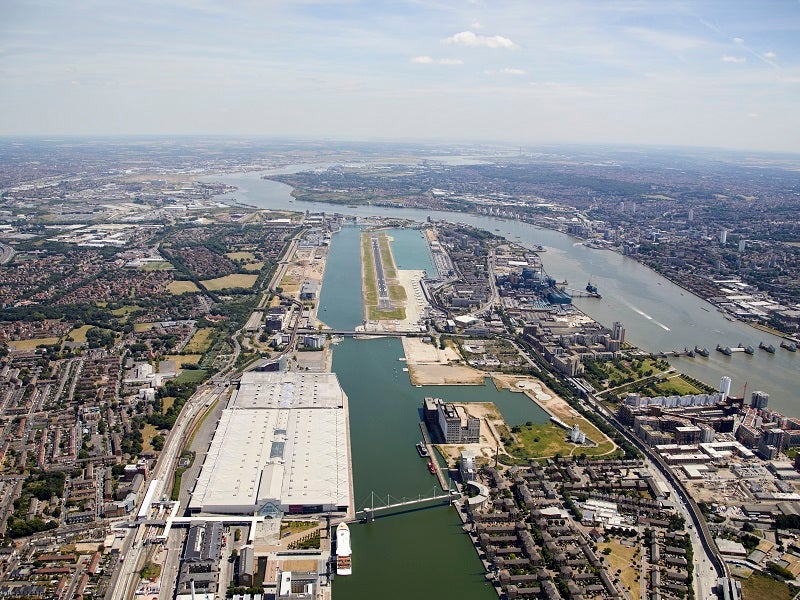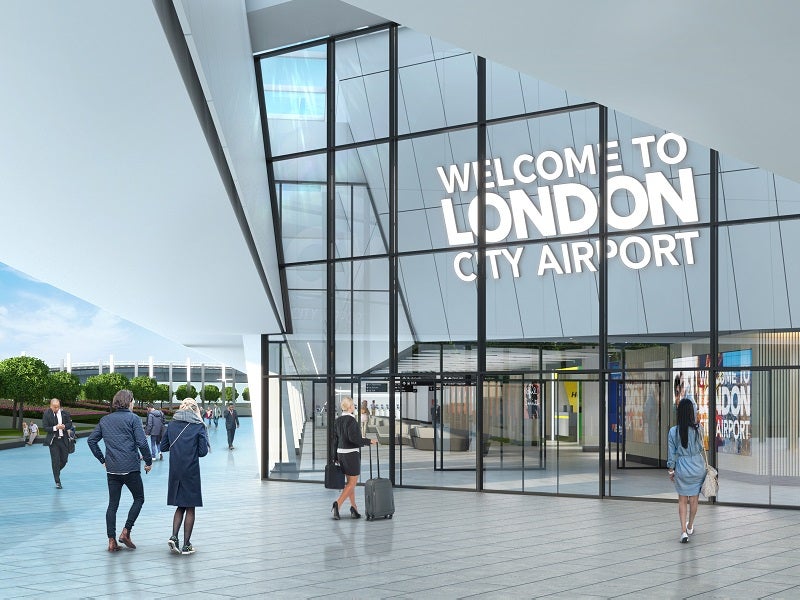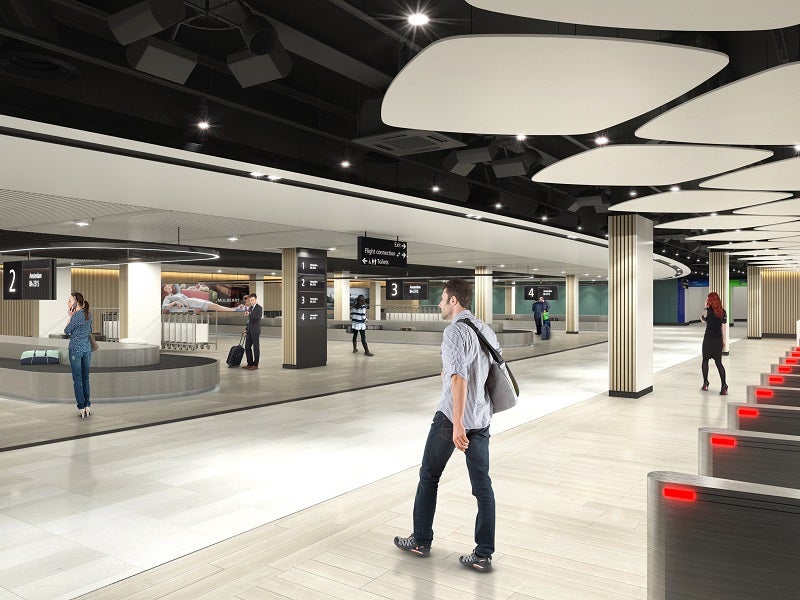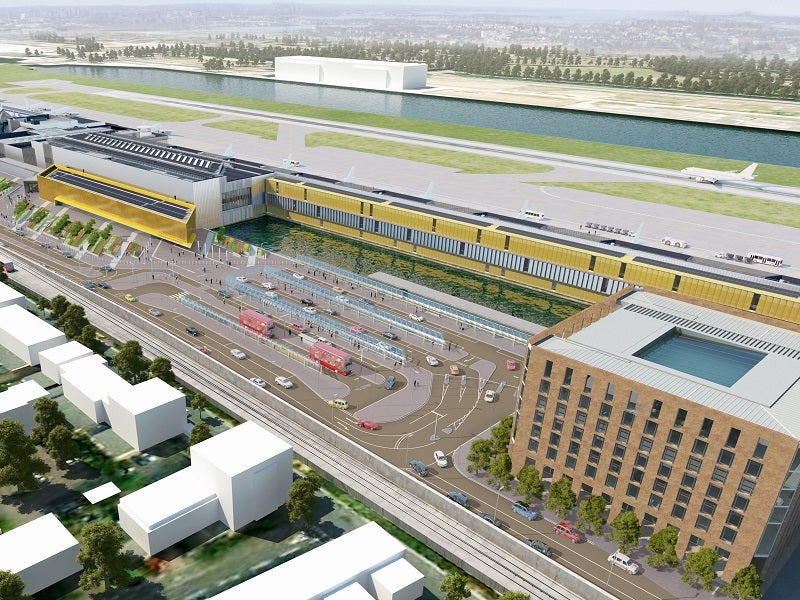
Tessa Simpson is head of environment and technical operations at London City Airport. She has nearly a decade of experience as an environmental specialist in construction and aviation, and has worked as environment manager at Luton Airport, and as an environment advisor for Kier Group.
Julian Turner: What are the key drivers behind London City Airport’s environmental strategy?
Tessa Simpson: London City Airport’s environmental strategy has evolved over many years. The environment has always been of major importance to the airport thanks to our location in the capital, but also because we take our environmental responsibilities seriously. Sustainability is key.

Discover B2B Marketing That Performs
Combine business intelligence and editorial excellence to reach engaged professionals across 36 leading media platforms.
London City has excellent public transport links, for example. At present, around 69% of our passengers travel to and from the airport via public transport, the highest percentage of any UK airport, and we also have some of the most stringent noise controls of any airport in the country.

We implement a specific air quality management plan that is constantly revised, and designed for the urban location and the situation that we operate in. As a result, air quality in and around London City is good, and the airport has always operated within accepted UK air quality levels.
More than 60% of the waste generated at the airport is recycled and we support local biodiversity projects. Some parts of our strategy are agreed as part of our planning permission, but a huge amount of what we do is proactive. Despite our relatively small size, we endeavour to be an environmental leader; this summer will publish our sustainability strategy for the next decade.

US Tariffs are shifting - will you react or anticipate?
Don’t let policy changes catch you off guard. Stay proactive with real-time data and expert analysis.
By GlobalDataJT: How does London City plan to cater for next-generation aircraft such as the Embraer E-190 E2?
TS: Just this week we opened two new stands that will accommodate next-generation airliners with similar-sized fuselage to our current fleet but with a larger wingspan, meaning they are quieter and more fuel-efficient.
This is part of our commitment to work closely with our airlines to ensure that we are ready for the types of aircraft that they want to bring to London City, and we try to incentivise them to operate the newest, quietest, cleanest aircraft. Around half of our current fleet is the Embraer E-190 and E-170, and the new E-190 E2 – which burns around 17% less fuel than the E-190 – was trialled here last year.
Preparing for these aircraft makes good business sense and we support our airlines as they move forward with their own sustainability agendas, so we are absolutely planning for aviation’s future.
JT: What measures did London City put in place in order to gain Level 3+ (Neutrality) status from the Airport Carbon Accreditation (ACA) programme?
TS: The ACA scheme is a global initiative run by Airport Council International. To obtain Level 3+, the highest in the scheme, organisations are required to calculate their carbon footprint annually and have that verified by an external body. They are also required to reduce that footprint over time and offset those CO2 emissions that can’t be eliminated altogether via external projects.
London City was required to engage with third parties at the airport and incentivise them to reduce their emissions. For us, Level 3+ is not the end point, however – we see it as part of the journey.

We may have reached the top level, but the ACA scheme recognises that it needs to be extended in order to help and incentivise airports in their drive to zero emissions. So we are already looking at how we can drive down emissions still further by offsetting, as well as reducing absolute emissions.
JT: Of the 293 airports participating in the ACA programme, only 62 have achieved Level 3+. What can be done to incentivise them to do more?
TS: I don’t think they need to be incentivised. All airports understand how important environmental issues are and that they can’t reduce carbon emissions on their own – it requires the whole industry to work together, nationally and internationally, in terms of policy and government incentives.
Not all airports are signed up to the ACA scheme, but that doesn’t mean that they are not upping their game. For example, some airports are focusing more on airlines and the wider carbon impact, rather than just focusing the emissions from their terminals.
If you look at the other UK airports that have achieved +3 accreditation, they are the big players such as Gatwick and MAG. The airlines are also implementing substantial measures in terms of offsetting and reducing carbon emissions; British Airways, for instance, is offsetting all of its domestic flights.
JT: What does the term ‘carbon neutral’ mean in the context of London City?
TS: Carbon neutrality is focused on our own business emissions, those that we have direct control over; that doesn’t include aircraft, service access, or transport to and from the airport, for example. In the context of the ACA scheme, carbon neutrality means offsetting total emissions to zero.
For example, we are supporting a solar project in India, which is independently verified to make clear how many tonnes of carbon are eliminated. London City then ‘buys’ those carbon offsets to add an equivalent value to what we are already doing to reduce our footprint at the airport itself.
JT: How does London City plan to achieve net zero carbon emissions by 2050 without offsetting?
TS: We have already initiated a number of energy reduction schemes, including replacing all of our terminal, runway and taxiway lighting with LEDs, and replacing boilers in order to be more efficient.

In the next year we are installing solar panels on the terminal roof, switching our electricity to a renewable supply, replacing our fleet with electric vehicles, and installing charging points for passengers and workers. All this is driven by passenger demand, political stakeholders, airport shareholders, and by our staff.
JT: How do you respond to the view that air travel must be seriously curtailed, and alternative modes of transport found, if countries have any hope of meeting emissions targets?
TS: I am hopeful and confident that the aviation industry can decarbonise – we have to. There is a huge amount of work going on behind the scenes on electric aircraft and hybrid aviation systems, for example. However, a lot of this technology is still in its infancy and needs scaling up.
The carbon reduction argument, although important, has to be balanced against the myriad benefits that aviation brings to people’s lives, the economy, and in terms of well-being. There are some remote parts of the UK, for instance, that can’t be connected by anything other than air travel.
Globalisation benefits everybody, and we need to talk about and understand the issue as a whole, rather than simply saying ‘we need to decarbonise’. Of course we do, but the question has to be, ‘how do we get there in a sustainable way that will benefit everyone?’





